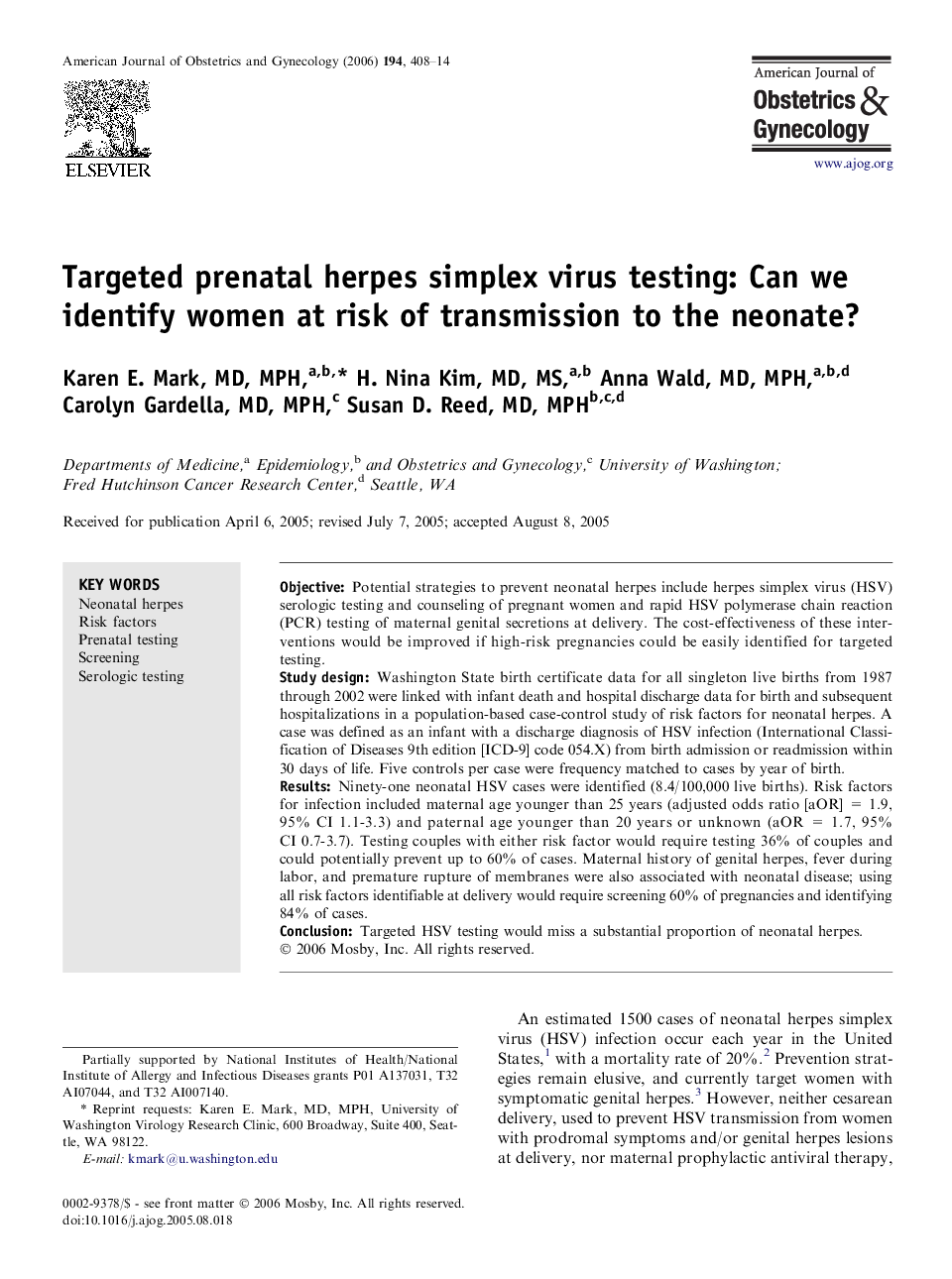| Article ID | Journal | Published Year | Pages | File Type |
|---|---|---|---|---|
| 3441460 | American Journal of Obstetrics and Gynecology | 2006 | 7 Pages |
ObjectivePotential strategies to prevent neonatal herpes include herpes simplex virus (HSV) serologic testing and counseling of pregnant women and rapid HSV polymerase chain reaction (PCR) testing of maternal genital secretions at delivery. The cost-effectiveness of these interventions would be improved if high-risk pregnancies could be easily identified for targeted testing.Study designWashington State birth certificate data for all singleton live births from 1987 through 2002 were linked with infant death and hospital discharge data for birth and subsequent hospitalizations in a population-based case-control study of risk factors for neonatal herpes. A case was defined as an infant with a discharge diagnosis of HSV infection (International Classification of Diseases 9th edition [ICD-9] code 054.X) from birth admission or readmission within 30 days of life. Five controls per case were frequency matched to cases by year of birth.ResultsNinety-one neonatal HSV cases were identified (8.4/100,000 live births). Risk factors for infection included maternal age younger than 25 years (adjusted odds ratio [aOR] = 1.9, 95% CI 1.1-3.3) and paternal age younger than 20 years or unknown (aOR = 1.7, 95% CI 0.7-3.7). Testing couples with either risk factor would require testing 36% of couples and could potentially prevent up to 60% of cases. Maternal history of genital herpes, fever during labor, and premature rupture of membranes were also associated with neonatal disease; using all risk factors identifiable at delivery would require screening 60% of pregnancies and identifying 84% of cases.ConclusionTargeted HSV testing would miss a substantial proportion of neonatal herpes.
